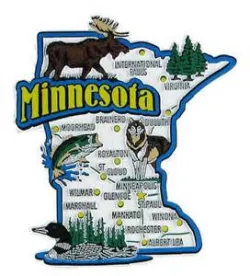In his Emergency Executive Order 20-56 issued on May 13, 2020, Minnesota Governor Tim Walz signaled plans for a broad reopening of Minnesota businesses. Governor Walz expanded on earlier Executive Orders 20-40 and 20-48 (which reopened some non-critical businesses) by allowing additional non-critical businesses (such as malls and retail stores) to open on May 18, 2020, provided that these businesses have a “preparedness plan” in place. Further, Governor Walz made clear in Executive Order 20-56 that the state would issue a “phased plan” no later than May 20, 2020, to “achieve the limited and safe reopening of bars, restaurants, and other places of public accommodation beginning on June 1, 2020.” This last statement brought hope to bars, restaurants, salons, fitness centers, and other places of public accommodation that they could begin reopening on June 1.
But during a press conference on May 20, 2020, Governor Walz made clear that the reopening of Minnesota’s bars, restaurants, salons, fitness centers, and other places of public accommodation would be slow and begin for the most part after June 1. Specifically, he announced that although indoor restaurants and bars will remain closed, restaurants may provide outdoor dining only starting on June 1. Further, outdoor dining may only occur if social distancing is enforced and restaurants abide by the following safety protocols:
- limit occupancy to a maximum of 50 patrons;
- limit tables to four people (or six people for families);
- provide six feet between tables;
- require reservations; and
- require masks for all workers.
Similarly, salons may open on June 1, so long as these establishments reduce capacity to 25 percent and require staff to wear personal protective equipment. Notably, the state has not provided any dates for lifting restrictions for gyms and fitness centers, and so restrictions will remain in place beyond June 1. In short, many bars, restaurants, and other places of public accommodation will now have to wait to reopen or expand their service beyond limited outside dining.
On May 20, 2020, the Minnesota Department of Health, Department of Labor and Industry (DLI), and Department of Employment and Economic Development also issued an updated COVID-19 preparedness plan template on the DLI website as a starting point for bars, restaurants, and other services. According to the DLI, these businesses must prepare, post, and provide employees with copies of their preparedness plan before reopening. The updated template is a complement to the May 13 preparedness plan template for other non-critical businesses (such as retail stores and malls) and the related checklist of guidelines for creating a preparedness plan in Minnesota.
The May 20 template provides that bars, restaurants, and other services must, at a minimum, address the following seven items in their preparedness plans:
- “policies and procedures that assist in the identification of sick workers and ensure sick workers stay home;
- implementation of engineering and administrative protocols for social distancing;
- worker hygiene and source controls;
- workplace building and ventilation protocols;
- workplace cleaning and disinfecting protections and protocols;
- drop-off, pick-up and delivery protections and protocols; and
- communications, training and supervision protocols.”
The template also notes that for “businesses that engage with customers and clients, the COVID-19 [p]reparedness [p]lan must include and describe how your business will implement, at a minimum, the following” additional requirements:
- “what customers and clients can do to minimize transmission;
- additional protections and protocols for receiving and exchanging payment;
- additional protections and protocols for managing occupancy;
- additional protections and protocols to limit face-to-face interactions; and
- additional protection and protocols for distancing and barriers.”
Although bars, restaurants, and public accommodations can start working on their preparedness plans, many are surprised and disappointed because they must now await future guidance concerning whether they will be allowed to use those preparedness plans to reopen in some fashion after June 1. Similarly, several churches and religious groups are reportedly disappointed that religious services are limited to 10 attendees, and some denominations have indicated that they will defy this directive.




 />i
/>i

